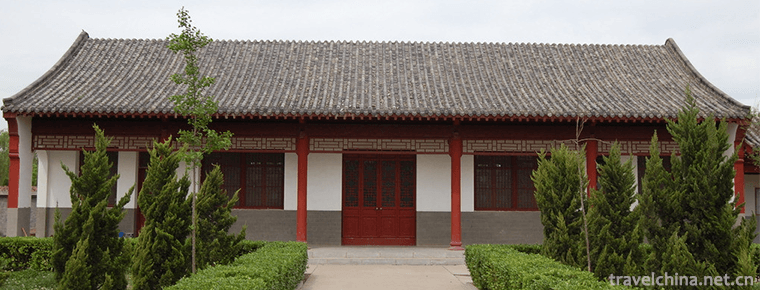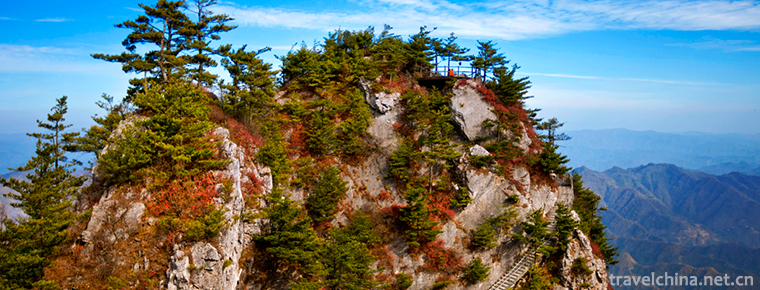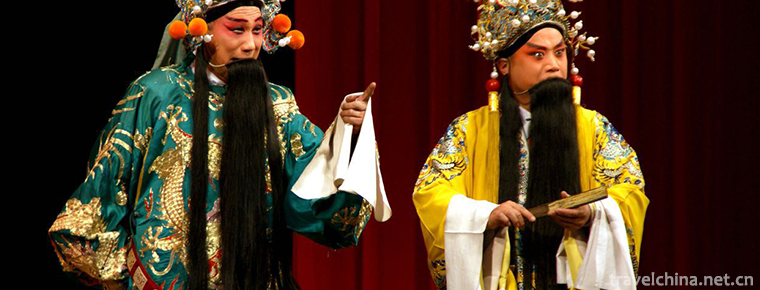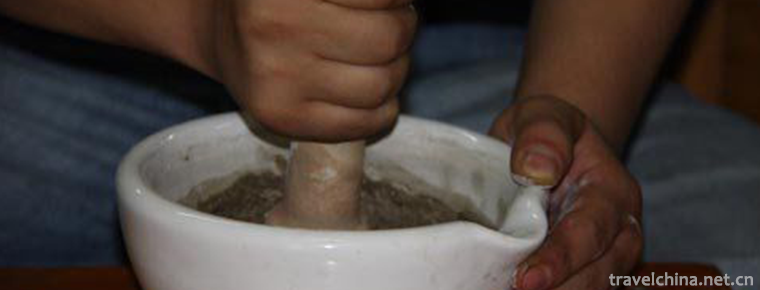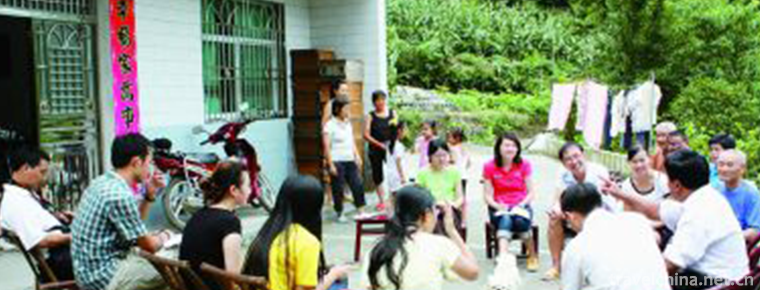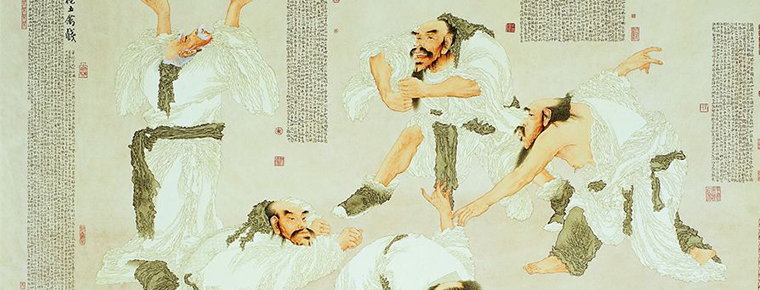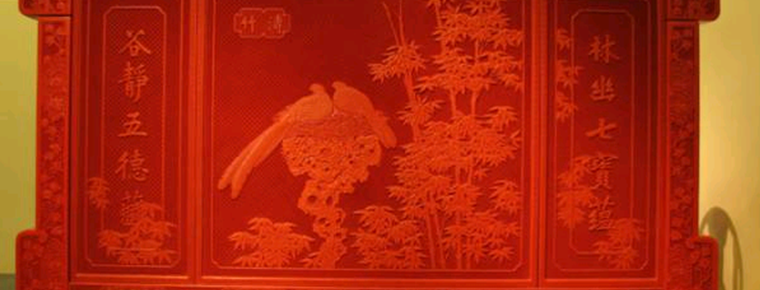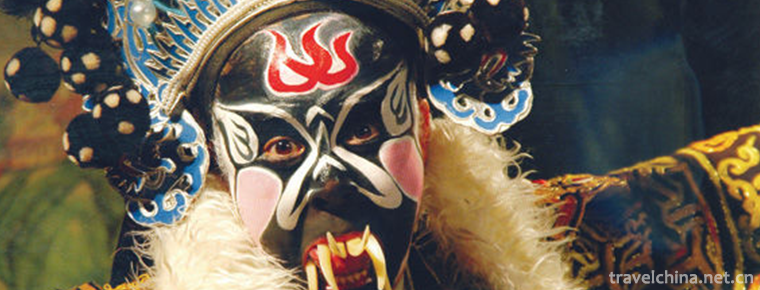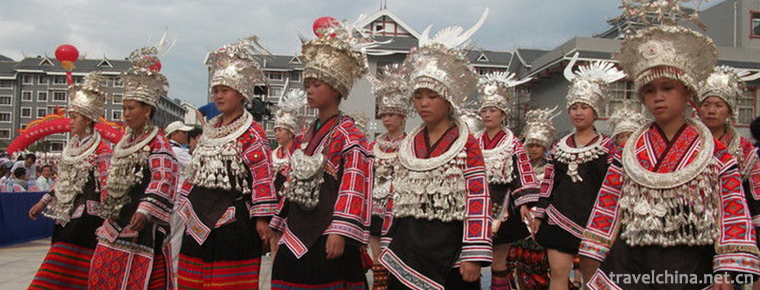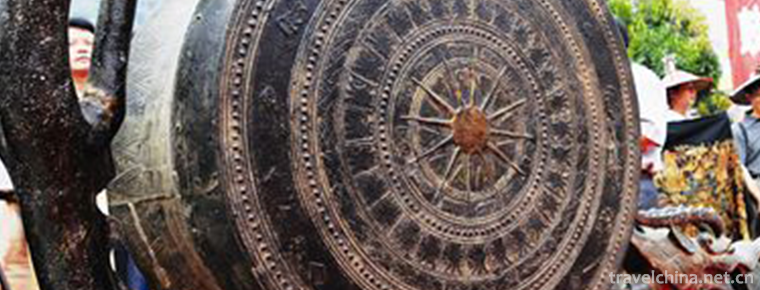Meng Lianggu Tourist Area
Meng Lianggu Tourist Area
Meng Lianggu Tourist Area is located at the junction of Mengyin County and Yinan County, Linyi City, Shandong Province. It belongs to the Mengshan Mountains System. It is said that Meng Liangzeng, a general of Yang Jiajun in the Song Dynasty, was stationed here, hence its name.
In May 1947, under the command of Chen Yi and Suyu, the Eastern China Field Army wiped out the elite Kuomintang troops, the integrated 74 divisions, and killed the division's head, Zhang Lingfu. Meng Lianggu became famous both at home and abroad.
The main scenic spots of Meng Lianggu Tourist Area are Meng Lianggu National Forest Park, Monument to Meng Lianggu Campaign and Monument to Meng Lianggu Campaign. Meng Lianggu National Forest Park covers an area of 800 hectares.
Meng Lianggu Scenic Area is now "one of the top ten scenic spots of red tourism in China", national AAAA level scenic spot, national patriotic education base and 100 classic scenic spots of red tourism in China.
geographical position
Meng Lianggu Tourist Area is located in Mengyin County, Linyi City, Shandong Province. In 1947, the Eastern China Field Army wiped out the 74 division of the Kuomintang's elite army and made Meng Lianggu famous at home and abroad.
Meng Lianggu is located at the junction of Mengyin County and Yinan County. It belongs to the Mengshan Mountain System. Its average altitude is about 400 meters. Its main peak is 575.2 meters above sea level and covers an area of 1.5 square kilometers. "Gu" is the local common name for the steep topography of the Fangshan Mountains. It is said that Meng Liang, the general of Yang Jiajun in the Song Dynasty, had stationed troops there. Although Meng Lianggu is one of the "72 Gu" in Yimeng Mountains, its mountain body is different from other limestone peaks and consists of granite. Granite mega-stones exposed in the upper part of the mountain, interdependent, constitute a natural stone shed. Although there is no cliff at the top, the mountain is steep.
Major attractions
The main scenic spots of Meng Lianggu Tourist Area are Meng Lianggu National Forest Park, Monument to Meng Lianggu Campaign and Monument to Meng Lianggu Campaign. Meng Lianggu National Forest Park covers an area of 800 hectares. On the main peak of Meng Lianggu, there is a Monument to Meng Lianggu's Campaign. Under the hill, there is a Monument to Meng Lianggu's Campaign. It is now a patriotic education base in Shandong Province. Meng Lianggu Forest Park was designated as a national forest park by the Ministry of Forestry in January 1992.
Monument
Meng Lianggu Campaign Monument is located at the top of Meng Lianggu Mountain in Meng Lianggu Tourist Area. It covers an area of 5000 square meters and has a building area of 100 square meters. It was built in 1984 to commemorate the famous "Meng Lianggu Campaign". The monument, 30 meters high, is made of three pieces of grey granite like bayonets, symbolizing the armed forces system of the field army, local army and militia. The base is a regular triangle with a side length of 20 meters and a height of 1.6 meters. It forms a butt of a gun, which symbolizes the emergence of power in the barrel of a gun. The butt of the gun is surrounded by a red fence, which symbolizes the garland beneath the mountains. The upper and lower parts of the monument constitute an organic whole, which symbolizes the victory of unity between the army and the people and the victory of the people's war. The front of the stele is inscribed with eight inscriptions written by Comrade Hu Yaobang: "Monument to the Meng Lianggu Campaign". On the East is inscribed with Marshal Chen Yi's poem "Chiang Kai-shek is bound to lose" and General Su Yu's inscription. On the west is inscribed with the inscriptions of Liu Shaoqi, Zhu De, Ye Jianying and other old proletarian revolutionists.
Memorial Hall
Meng Lianggu Campaign Memorial Hall is located in the Mausoleum of Meng Lianggu Martyrs, situated in the north and south, covering an area of 81,000 square meters and a building area of 3240 square meters. Three-tier structure. The first layer shows the background of the campaign; the second layer shows the campaign's history (including the former army); the third layer shows the role of the campaign (the turning point of Shandong's battle situation, the foundation of Huaihai battle, the forerunner of national liberation). There are five exhibition halls in the museum, namely the foyer, the battle hall, the branch lobby, the martyr hall and the double support hall. The front of the hall is the inscriptions of Mao Zedong, Deng Xiaoping and Jiang Zemin, the core of the three generations of leading collectives of the Central Committee of the Communist Party of China, and the large sand table of the Meng Lianggu Campaign. The Battle Hall, in chronological order, shows the course of the campaign, the battle sequence table of the East China Field Army and the offensive and obstructive situation of the participating troops. The front lobby of the branch shows the situation of Yimeng people before the branch. The Hall of Heroes shows the deeds of some heroes and battle heroes. Shuangyong Hall introduced the situation of Mengyin County going out of the mountain gate, carrying out the support of troops in different places and gaining the superior model counties in the whole country.
In front of the Memorial Hall of Meng Lianggu Campaign is a large granite sculpture of Marshal Chen Yi and General Suyu standing beside Ma. The statue is 7.75 meters high. The base is 2.75 meters high. The red granite is engraved with Marshal Chen Yi's long poem "The Battle of Meng Lianggu". The statues of the two generals are vivid, reproducing the brilliant image of the main commander of Meng Lianggu's Campaign at that time.
Cemetery of martyrs
Behind the Memorial Hall of Meng Liangfan Campaign is the Mausoleum of Meng Liangfan Martyrs. In the middle of the cemetery is the ashes of General Suyu, followed by the famous pagoda of martyrs. The pagoda is engraved with the names of more than 2800 martyrs who died in Meng Liangfan Campaign. The remains of more than 200 martyrs are buried in the cemetery.
National Forest Park
Meng Lianggu National Forest Park is located in Sun Zu Town, Yinan County, Shandong Province, which is the "hometown of Zhuge and Hongwei". The main peak of Meng Lianggu is 536 meters above sea level, with a total area of 658.8 hectares, accounting for 87% of the whole Meng Lianggu tourist area. It is the main battlefield and the main place where the campaign took place. After more than 30 years of afforestation and forestation, it has formed a forest regulation of 10,000 Mu composed of dried fruit forest and shelter forest. The main tree species are pine, locust, chestnut, Chiyang, pale bamboo, torch tree, maple and so on. Forest farm is a scenic forest tourist attraction with dense forests and grass and strange rocks. Meng Lianggu Forest Park was designated as a national forest park by the Ministry of Forestry in January 1992.
Tourism Information
Tickets: 50 yuan per person, Meng Lianggu Campaign Memorial Hall (30 yuan per person, with ID card to visit), Meng Lianggu Monument (30 yuan per person);
Opening Hours:
From 7:00 a.m. to 19:00 p.m., it takes about 1.5-3 hours to visit the whole scenic area.






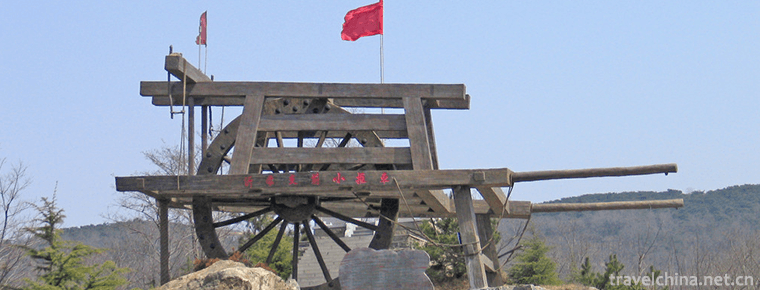
-
Green Lake Park
Cuihu Park is located at the foot of Luofeng Mountain in Kunming City.
Views: 202 Time 2018-10-21 -
Yicheng Temple Scenic Spot of Sun Bin Tourist City
Sun Bin Tourist City is located in Jishan Town, 20 kilometers northeast of Juancheng County, Heze City, Shandong Province. Juancheng is the hometown of Sun Bin, a famous.
Views: 80 Time 2019-02-13 -
Tianzhu Mountain National Forest Park
Tianzhushan National Forest Park, a national 4A-level tourist attraction, is located in Tianzhushan Town, 30 kilometers southeast of Shanyang County Town, Shaanxi Province, south of Huling and north o.
Views: 140 Time 2019-02-22 -
North Road Bangzi
Bangzi, also known as Shanglu Opera, is a local traditional drama in Datong, Shuozhou, Xinzhou and parts of Inner Mongolia and Hebei in northern Shanxi Province. It is one of the national intangible c.
Views: 153 Time 2019-04-04 -
Production Techniques of Tibetan Mineral Plant Pigments
Since the emergence of human beings, mineral pigments have been accompanied by human beings. Mineral pigments were first used to draw murals.
Views: 205 Time 2019-04-09 -
The Story of Duzhenwan
Duzhenwan stories cover myths and legends, life stories, ghosts, foxes, ghosts and other fields, including conspiracy, good and evil, kindness and hatred and other different types.
Views: 160 Time 2019-04-28 -
Huatuo Wuqin Opera
Huatuo Wuqin Opera is a set of guiding techniques compiled by Huatuo, a famous physician in the late Eastern Han Dynasty, according to the principles of traditional Chinese medicine,.
Views: 94 Time 2019-05-04 -
Gold lacquer inlay decoration technique
Gold lacquer inlay decoration technology, Beijing local traditional handicraft, one of the national intangible cultural heritage..
Views: 254 Time 2019-05-07 -
Ninghai Pingtao
Ninghai Pingdao originated in the late Ming and early Qing Dynasty and was popular near Ningbo. It has a history of three or four hundred years. Ninghai Ping Tune belongs to the branch of Xinchang Tun.
Views: 125 Time 2019-06-08 -
Yangasha
Yangasha, an epic originating in Jianhe, Guizhou Province, is eulogized for Miao compatriots from generation to generation. It is a sad and elegant love story about a passionate Miao girl. It is the G.
Views: 178 Time 2019-07-11 -
The Bronze Drum Custom of the Zhuang Nationality
Bronze drum is a percussion instrument created by Pu and Yue people in ancient China. Up to now, it has a history of more than 2700 years. Guangxi has the largest number and the widest distribution. T.
Views: 183 Time 2019-08-16 -
Neijiang economy
In 2019, the GDP of Neijiang City will reach 143.33 billion yuan, an increase of 7.8% over the previous year in terms of comparable prices. Among them, the added value of the primary industry was 24.050 billion yuan, an increase of 2.9%; the added value.
Views: 357 Time 2020-12-16

